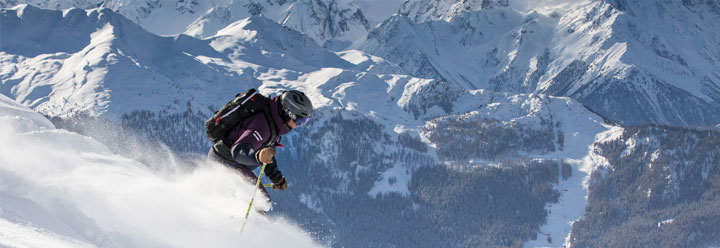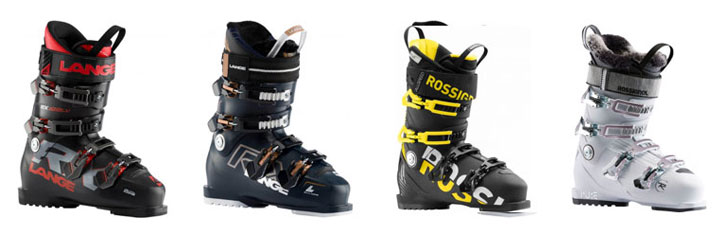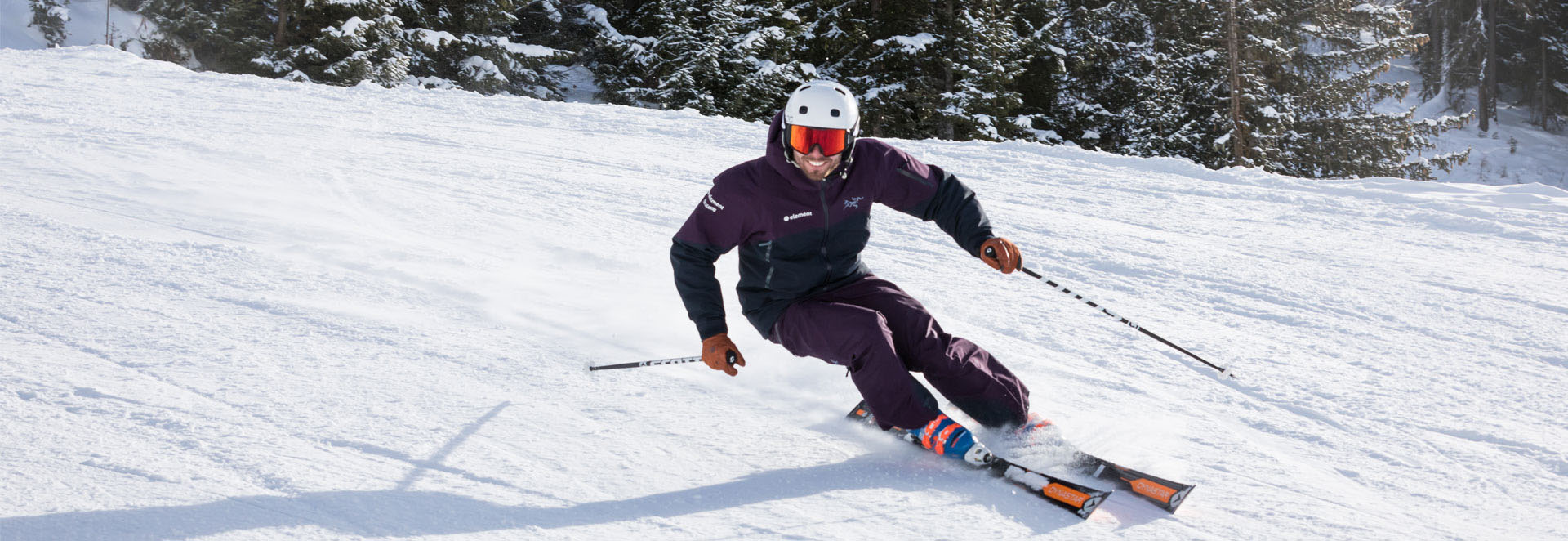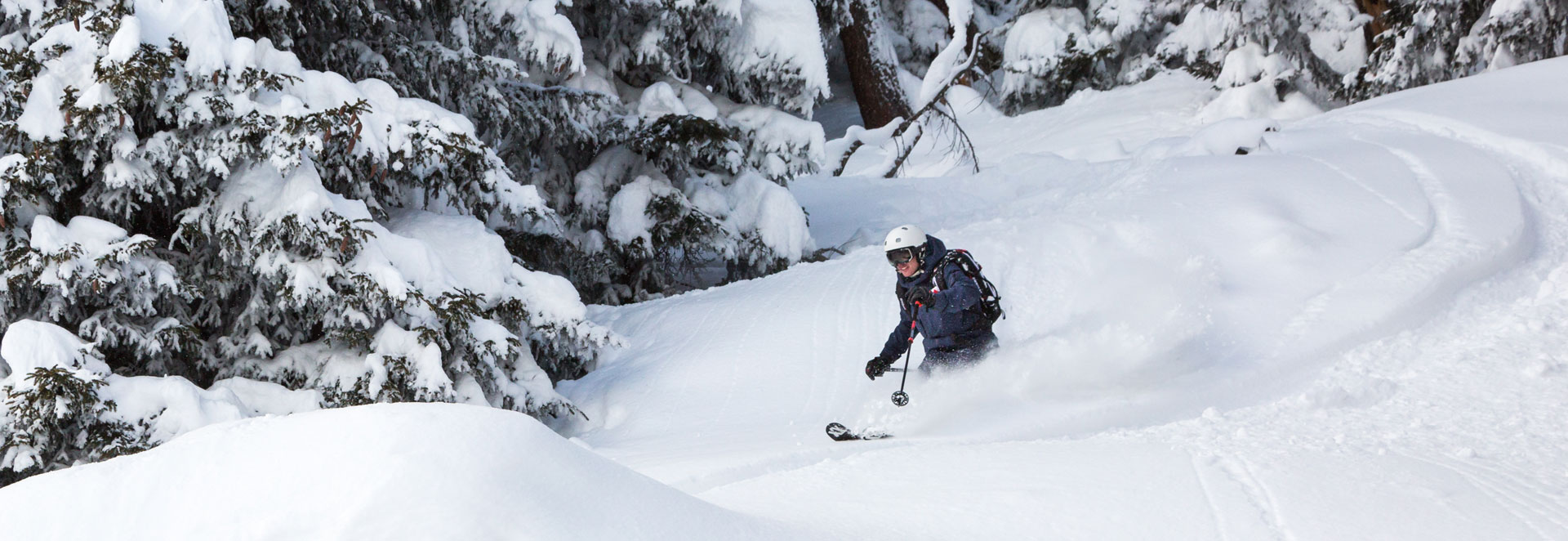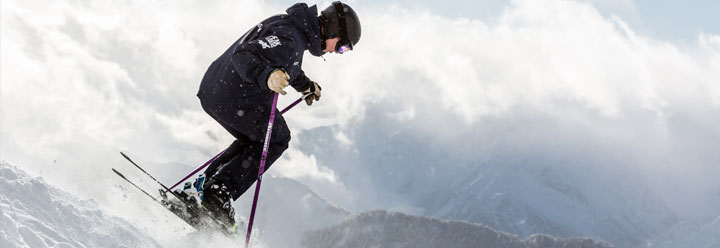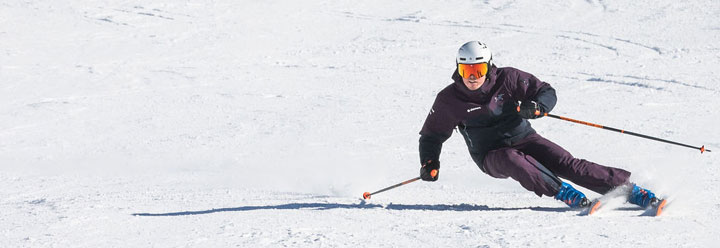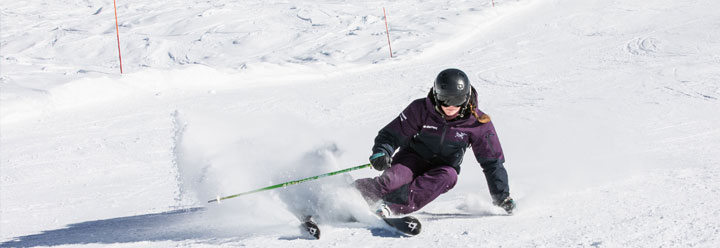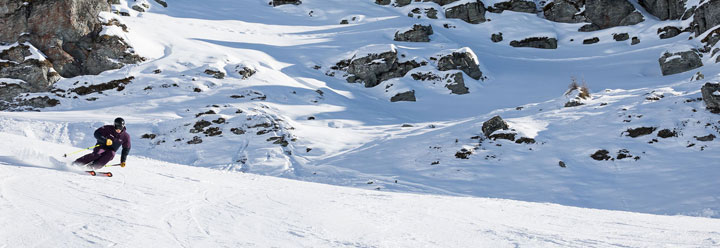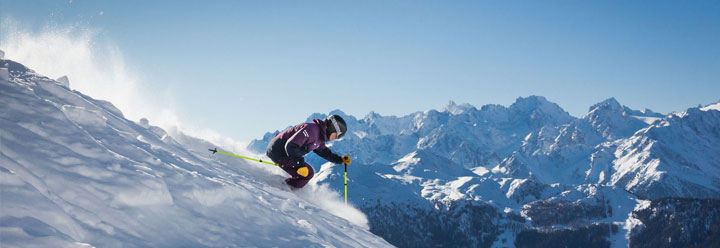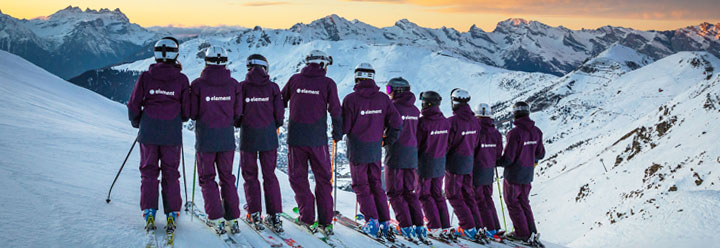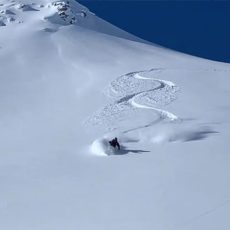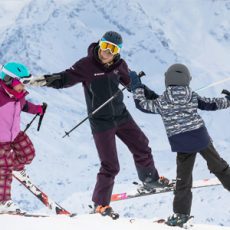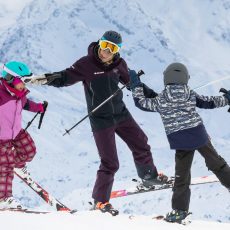Skiing is a sport rife with opinions.
But the trouble with opinions is that you can’t always trust them…
So we’ve put together a little blog to explode a few of the biggest myths and to (we hope) help you enjoy your ski lessons even more.
MYTH #1
“SKI BOOTS SHOULD BE PAINFUL”
Nope. They really shouldn’t.
Ski boots might not be as comfortable as your everyday shoes – but they should not be painful. They’re bigger than normal shoes, heavier and frankly clumsier.
But they also give you more support and protection.
The key with ski boots is to make sure that you flex forwards – not just when you try them in but when you ski too.
Just bend your knee over your toes and you’ll feel your toes move away from the end of the boot, leaving you with plenty of wiggle room.
The rest of the boot should leave you feeling supported but comfortable.
The best metaphor for how tight to wear your boots is that they should feel like a firm hand shake – you shouldn’t feel like your being squeezed or crushed (you’ll just lose circulation), but it shouldn’t feel like at wet fish – loose, unsupported and slopping around in there.
If you still experience numbness, pins and needles, cramping or excessive rubbing, then these are simply not the boots for you. Put them back and try some others on.
Proper fitting boots are the key to a good ski holiday and well worth the time to find. We recommend talking to a boot fitter in resort so they can help deal with any tweaks you need in the first few days skiing.
MYTH #2
“SKIS SHOULD COME UP TO YOUR CHIN”
What height your skis are depends on what you want to do with them.
If you want to carve your way around Verbier like the next World Cup superstar, then you might need something longer to help you stay stable at speed.
And if you want to go off=piste and skiing the backcountry with a guide, you should be longer still. Freeride skis are usually between your eyebrows and the top of your head.
On the other hand, if you want to do short turns around the resort, especially short slalom style turns, then shorter skis will suit you better.
But skis don’t actually know how tall you are, they will work at their best when they are being put to their proper use.
So all this talk of chins and eyebrows and the top of your head is a guide. The best answer is to have a good chat to the experts in the shop and as always talk to your ski instructor.
MYTH #3
“LEAN BACK WHEN YOU SKI POWDER”
Leaning back really doesn’t help. Take our word for it.
This is becoming a very common sight around Verbier when the snow arrives in force. But it really isn’t a good way to control your skis – and your knees won’t thank you for it at all.
OK, everyone leans back when they need to make a recovery or out of sheer necessity, but it’s not where we want to spend most of our time. Leaning back will keep your tips up – but will also only succeed in making it harder to turn your skis.
When skiing powder it’s important to keep centred on your skis. You’ll have more control and hugely reduce the risk of injury. Your skis (especially off-piste skis) are designed to float with you in the middle of them, not falling out of the back.
You should also narrow your stance slightly and work both legs together like a single unit through the deep snow.
These little changes will help you power through the powder.
If it’s a movement that you’ve become used to, then it will take time to fix. But just leaning back and hoping for the best means you’re missing a huge part of the amazing feeling of skiing powder.
MYTH #4
“IF YOU WANT TO SKI POWDER YOU NEED FAT SKIS”
It’s true that modern fat skis make life a bit easier in powder and crud, but you can happily ski powder on piste skis too.
Fat skis help by having a bigger surface area which distributes your weight more, making it easier to float above the fluffy white stuff. But, sadly, that float on a really fat ski can also mean you develop a few technical peculiarities…
In truth the biggest impediment to skiing powder can be skis that are too stiff – and in that respect it doesn’t matter if you have fat or normal skis, if your skis are really stiff it will feel like you’re standing on a submarine.
However, staying centred and balanced on your normal skis will help you turn when you are playing in the snow. Using piste skis will help you build up and develop the necessary skills rather than becoming too reliant on fat skis to have fun.
Plus you’ll sink into the powder a bit more and feel like you’ve got more powder than everyone else…
Obviously, if you’re here to chase powder everyday then by all means use fat skis, but don’t feel like you have to – you can still have loads of fun even if you don’t have them.
MYTH #5
“I DON’T NEED TO TURN”
Yes. You do. In fact a lot of people don’t turn much because (there’s no way to say this politely) they’re just not very good at turning…
While going straight down a red run may be fun it requires minimal talent. If you are building your turn up properly and creating the platform under your feet, you can generate more forces and have far more fun than you can just by going straight and hoping for the best.
To be honest if going really quickly floats your boat, that’s fine. But going quick round corners and feeling the ski bend and work against the snow is ten times more fun and an even better feeling.
It also means you spend more time skiing rather than just sitting on endless lifts.
So turn. Learn how to turn in different ways. And discover what your skis can really do when you bend them…
MYTH #6
“USE YOUR SHOULDERS TO HELP YOU TURN”
This is something we see all the time.
People often swing their upper body and their shoulders in the hope that the skis will join in with the movement.
But turning your shoulders will not really help you turn your skis – and certainly not give you any kind of control.
You want to start your turn by building up the pressure on your ski and progressively using your feet, ankles and knees add rotation and edge angle. As you can see in the photo Lottie is nice and square to her skis and she’s certainly not about to swing her shoulders to see if the next turn works out…
Using your shoulders to pull the rest of your body round will not only make you slow but you’ll feel like you’re not really in control of the skis – especially when the going gets tough.
Plus, sadly, it makes your skiing look sloppy. So start thinking more about where your feet are driving your skis and less about where your shoulders fancy going…
MYTH #7
“LOOK DOWN THE MOUNTAIN”
This is one of those well-meaning ideas that really comes from a technical foundation. But always gets lost in translation.
We often imagine a ski instructor out of the seventies telling us to “benzee knees”. Well the same guy also told people to look down the mountain.
The truth is that looking down the mountain is an output – a consequence – of a load of stuff working in your skiing. It shouldn’t be an objective and will probably make some funky things occur in your technique elsewhere if you try to make it happen.
It’s a symptom of all the steering elements working independently – not an end in itself.
So stay focussed on what you’re doing with your feet, then with your legs. And work your way up.
You’ll find that your body will be looking where you need it if you get the foundations right…
MYTH #8
“TURN ROUND YOUR POLE”
This always makes pole planting sound like you’re dropping anchor. As if you can plant it and cling on as you swing round the next turn…
But nope. Don’t do that. And don’t think about it like that.
The pole plant is part of the initiation of a turn. Frankly it’s a “tap” not a plant. The pole plant helps unleash a serious of movements that start building a new platform.
But it’s never the middle of the turn. You can’t “turn round it”.
So just think of it like it’s a signal: “I’m starting my next turn now“.
MYTH #9
“YOU DON’T NEED SUNSCREEN WHEN IT’S COLD”
Finally, unless you want to return to the office sporting a bright red face (with painfully obvious goggle marks) you will definitely need sun cream!
The sun in Verbier (much like the après) is pretty fierce.
The UV rays from the sun bounce off the snow gaining strength and becoming more harmful. This makes sun cream a winter holiday must have – as bragging about how great your holiday was becomes a lot harder when you look like a lobster.
So you should always have sunscreen on – and keep applying every few hours. As Baz Luhrmann once said: “Wear sunscreen“.

